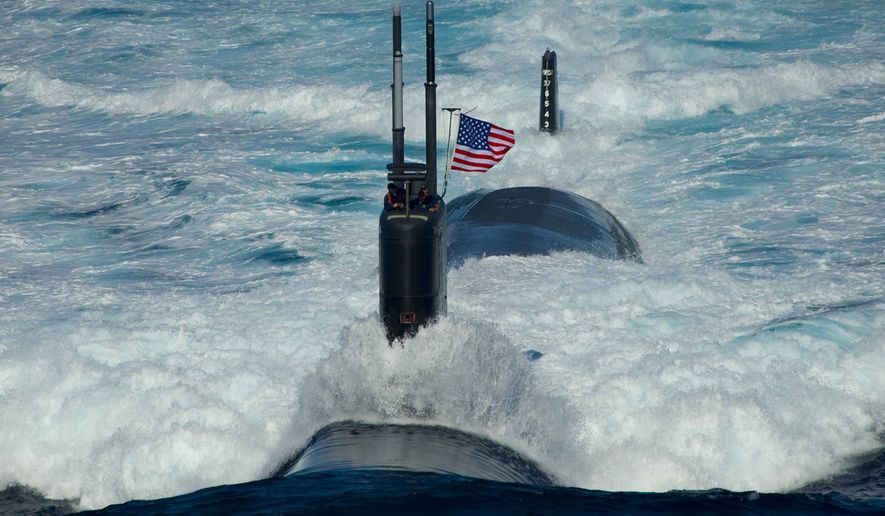The Pentagon on this week announced the deployment of its first new nuclear weapon in decades and in the process issued a clear warning to Moscow, a move critics say represents a return to Cold War-era brinkmanship that makes the prospect of a deadly nuclear miscalculation far more likely.
Navy officials confirmed the fielding of a new submarine-launched ballistic missile warhead that the Trump administration has cast as a central component in its strategy of deterrence. The Defense Department said the W76-2 low-yield weapon, outlined in the administration’s sweeping 2018 Nuclear Posture Review, proves that the U.S. is maintaining an undeniable nuclear edge over Russia and all other rivals.
Lawmakers had mixed reactions to the confirmation of the missile deployment, coupled with the public comments directed toward the Kremlin. They said putting any new nuclear weapons into the arsenal, even “low-yield” missiles, is a dangerous step that could send the wrong signal to adversaries.
Military officials countered that the deployment fills a distinct hole in the U.S. nuclear arsenal and improves deterrence by making it clear that the Pentagon has the capability to respond quickly in any nuclear showdown.
“In the 2018 Nuclear Posture Review, the department identified the requirement to ‘modify a small number of submarine-launched ballistic missile warheads’ to address the conclusion that potential adversaries, like Russia, believe that employment of low-yield nuclear weapons will give them an advantage over the United States and its allies and partners,” Undersecretary of Defense John C. Rood said in a statement.
“This supplemental capability strengthens deterrence and provides the United States a prompt, more survivable low-yield strategic weapon; supports our commitment to extended deterrence; and demonstrates to potential adversaries that there is no advantage to limited nuclear employment because the United States can credibly and decisively respond to any threat scenario.”
A Cold War-era agreement had long banned Moscow and Washington from having less-powerful “tactical” nuclear weapons on the theory that commanders would be far more tempted to use them in a crisis.
The new deployment is seen as a critical piece of the U.S. strategy to defend against relatively small tactical nuclear weapons, such as those Russia possesses. The W76-2 warheads reportedly were first produced in February 2019, just months after the administration’s Nuclear Posture Review called for key changes in broader U.S. nuclear deterrence policy.
Military officials also say the presence of low-yield nuclear weapons won’t have any major impact on the Navy’s fundamental strategy at sea.
Still, critics say the administration is making a mistake with potentially grave consequences. House Democrats tried to block the missile’s deployment in the 2020 defense authorization bill, but they were stopped by the White House and the Republican-controlled Senate.
“There is no such thing as a low-yield nuclear weapon,” Rep. Ruben Gallego, Arizona Democrat and a Marine Corps veteran, said in a post on Twitter. “Either it’s a nuclear weapon or not. There is no use of this weapon that does not lead [to] nuclear war.”
Some private military analysts say the administration’s rationale behind the deployment is familiar.
“In the past, every tactical nuclear weapon has been justified with this line of argument, that smaller yields and ‘prompt’ use — once achieved through forward European basing of thousands of warheads — was needed to deter,” researchers William M. Arkin and Hans M. Kristensen wrote in a recent blog post for the Federation of American Scientists.
Although the U.S. boasts an intimidating nuclear arsenal capable of inflicting damage on an unimaginable scale, the submarine-launched variety is more easily maneuverable and could, in theory, prove vital in a major nuclear conflict. In such a scenario, land-based launches or nuclear strikes via aircraft could be susceptible to increasingly sophisticated Russian air defenses.
Submarines, on the other hand, may be able to get within striking distance of targets more easily.
• Ben Wolfgang can be reached at bwolfgang@washingtontimes.com.




Please read our comment policy before commenting.